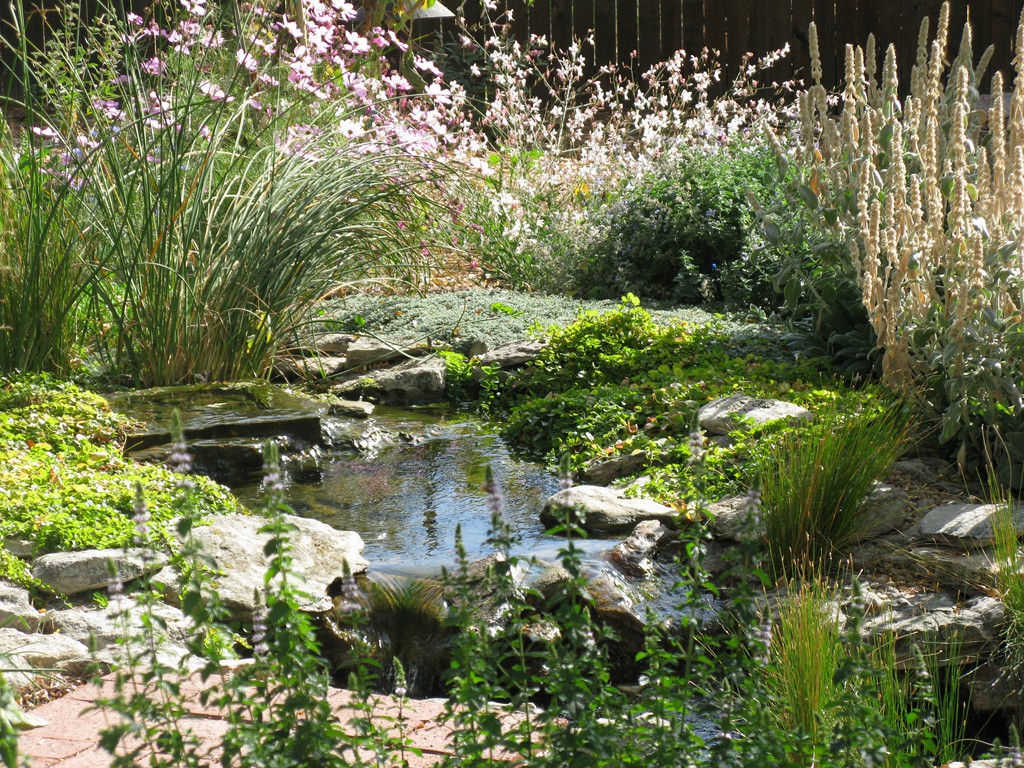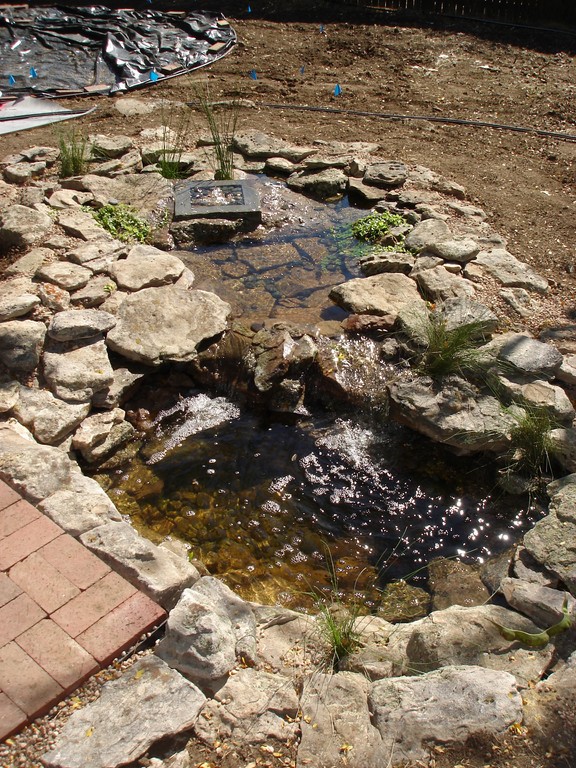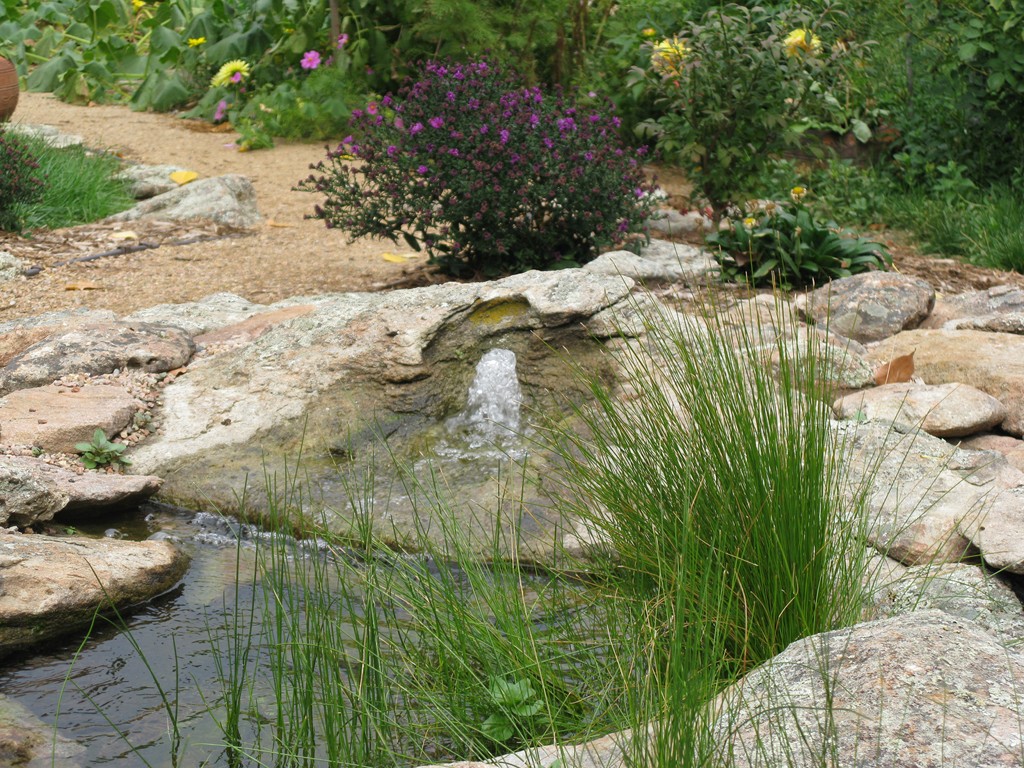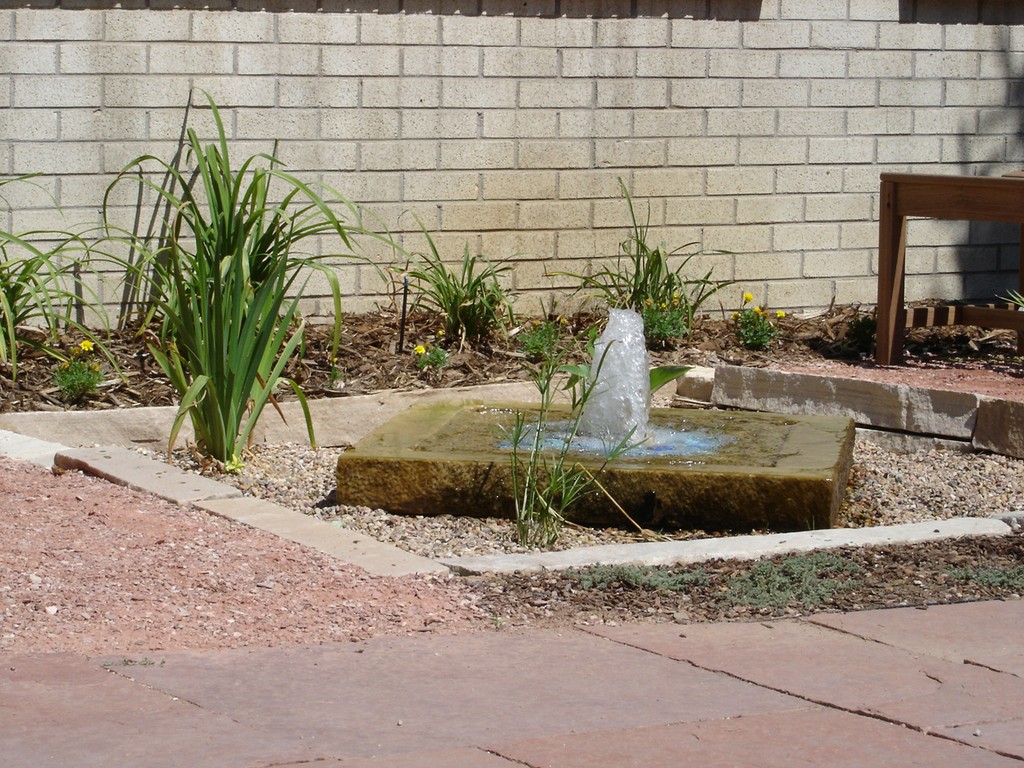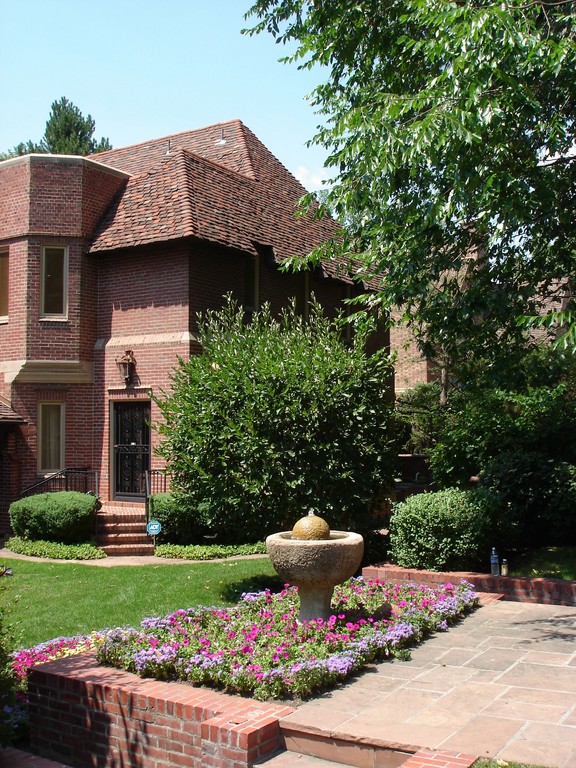Making Frames

No matter how much I talk or write or think about how I use water in landscapes, it never ceases to fascinate me. From childhood days of playing in the rain and watching as water formed puddles, flowed along gutters and ultimately disappeared into storm drains through to my grown-up work as a watershape designer and installer, this fundamental amazement and the intrinsic appeal of water have always been part of my life.
Along the way, I’ve always been interested in the language associated with things aquatic and how words tell water’s story. Thirst, quench, drench, roil, gush, splash, trickle, rain, wave, surf, bathe, float, tidal, gurgle, dive, freeze, boil, cascade, rivulet, torrent, cleanse, soothe, refresh – these and many other colorful, evocative words speak directly to a vast array of life experiences, images and sensations that cut to our emotional and spiritual cores.
This is where watershaping starts for me: When I’m designing any type of feature, these words and associations are never far from my mind. I use them as tools the way other people work with pencils and paper, drawing on a powerful, shared lexicon as the basis for my interactions with clients and in finding ways to use water effectively on their behalf.
SENSE OF PLACE
In effect, I see watershaping as an exercise in frame-making: We are in the business of finding the best ways to frame this wondrous material, and the physical possibilities we work with are as infinite and varied as is this most primal of nature’s elements.
In philosophical terms, this means I don’t see what I do as creating waterfeatures; instead, what I do is forge links between the water and surrounding spaces. Sometimes that means connecting ponds with distant mountain views. Other times, it’s about fashioning intimate gardens in the confines of small corners of clients’ backyards – or establishing flows alongside paths connecting one space to another.
Although this is largely an intuitive process, I consider a clear set of timbers as part of the framing process – typically starting with the visual boundaries of the space.
Working mostly in the Rocky Mountains, I’m often confronted by expansive views and by the need to use water to create elegant visual transitions from private spaces to the seemingly infinite grandeur of the natural landscape. There’s no way to “compete” with such vistas, so the challenge comes by way of creating the feeling of linkage between what I’m doing and what everyone who enters these spaces will immediately see.
The viewers in these cases come away with the impression that there is no separation between the distant prospect and a scene that is only a few feet away – or right where they’re standing.
| I learned a lot about how I approach the design process a couple years back when, for some reason, I found myself involved in a number of garden-railway projects. The attention to detail required to make these clients happy was phenomenal: It forced me reconsider the grander, Rocky Mountain-scale with which I was so familiar and taught me to look at scale and perspective in much more intimate ways. |
Not all of my clients, of course, have such views at their disposal. When I work instead within discernible confines – surrounding fences or hedges or tree lines or walls or homes – my goal is to establish intricate, intimate tableaux that have their own internal charm and variously engaging details. These concentrated designs very often will complement adjacent structures, harmonizing with their colors, lines and textures. It’s typically work on a smaller scale, but it conjures the same sorts of visual and emotional linkages I seek in more open spaces.
My approach to scale, incidentally, was changed forever during 2007, when, for some reason, I found myself doing several projects in which I contributed waterfeatures to the landscapes of elaborate G-scale model railroads. These were fascinating projects, basically because they forced me to abandon my conventionally naturalistic, Rocky Mountain-sized approaches to scale as well as perspective.
Those railway projects were unusual, to be sure, but they made me aware of how details functioned on much smaller scales than those in which I’d been accustomed to working. Rather than letting water elements take over and become expressions of my own expectations and ego, ever since those railroad projects I’ve become even more sensitive to surrounding environments and have seen the advantages this fresh outlook has given me in creating visual linkages and establishing frames within smaller settings.
CEREBRAL LANDSCAPES
Water also has a kinetic side of which I’m very well aware – especially in projects where it moves along some kind of pathway or thoroughfare. In these cases, I’m conscious of how people will pass through the space relative to the water’s movement and see this as another way to frame their aquatic experiences.
I recently, for example, completed a project for a couple in which the husband had created a series of flat, curving concrete paths through the backyard to make things easy on his wife, who uses a wheelchair. These structures tightened the spaces I had to work with, but that didn’t relieve me of the responsibility I had to create features that looked good and that were interesting up close while complementing a distant vista.
| This project was all about accommodating specific client needs. The husband had set up these concrete pathways for his wheelchair-using wife, and it was my responsibility to insert a watershape that not only looked good but would also brighten their experience of their yard and the views it offered. |
In this case, I used the water to convey a rhythm, starting with a quiescent pond that fed brisk streams and falls that flowed eventually to a tranquil collection pond. I had only a few inches of vertical transition available to conjure these effects – a situation that isn’t unusual for me despite the fact I work in a mountainous place.
If you know what you’re doing with moving water, you’re aware that you really don’t need dramatic elevation changes to create beautiful, flowing streams. The water can be induced to gurgle, bounce, sheet, drop and have different sounds. In fact, an orchestra can be conjured with a small vertical drop, and I often end up toning these elements down, using subtle methods of concealing water sources and making them seem as natural as possible as they emerge from around flat rocks or small welling pools.
| Although I often work on grand projects that take advantage of the Rocky Mountains, a great many of my clients live on the flats in lots that offer little or nothing by way of elevation change. As I see it, these projects give me the opportunity to conjure the experience of the great outdoors in confined spaces by subtly contouring their yards and using small vertical drops that bring sound and the visual joys of water in motion into their lives. |
This lower-key approach is applied even in my large, more dramatic systems: I like horizontal rockwork, subtle waterfalls, cascading streams and glassy, reflective surfaces. In the natural hierarchy of the world, water element are lowest, so to have water sources placed at artificially high levels simply isn’t appropriate. As I see it, if anything is going to compete with the verticality of the Rockies, it’s a challenge best left to trees!
In all of this, I am aware of the fact that, to be truly effective as a designer, I must occupy the environments that exist in the minds of my clients. I’ve found that if I listen carefully and am patient about the process, most people actually have wonderful capacities to visualize what they want. They might not be particularly adept at expressing those desires, but if I take my time and listen, I’ve always been able to extract what they’re “seeing” and combine their ideas with my own.
That’s part of why I call my Lakewood, Colo.-based company Lawn Chair Productions: It’s a quirky name, of course, but more important, it speaks to the fact that with every project I tackle, I just sit with my clients, often as not in lawn chairs, and spend time looking with them at spaces where water will be placed.
Much of the time, we don’t even speak directly about the project. Instead, we let the conversation wander where it will across a range of subjects. Invariably, this non-directed, restful conversation takes on meditative qualities that end up giving me valuable insights into what they’re imagining.
PEOPLE AND NATURE
I believe that all of the sitting and looking is very important, because the places I chose to sit with them are precisely the points from which my clients will observe and generally come to enjoy their watershapes – resting by the water, relaxing and allowing their minds to drift. By placing them in that spot and fostering a contemplative outlook, I help them unlock their ideas and develop their own sense of the frames were developing.
This method is so effective that even when clients resist investing their time in this way, I have taken to insisting (gently, of course) on their participation as a pre-condition for my taking on their projects. I do so knowing that, with some of my clients, projects have taken up to three years to take shape in their minds’ eyes!
These conversations, as suggested above, take place in a spot I’ve selected as a point of departure in organizing primary focal points. Once preliminary ideas begin to emerge, we can move to other locations – opposite angles, for example, or views through windows or along projected pathways. During this time, I’m paying very careful attention and glean the minutest details of how the clients think, drawing specific inspiration from how they’ve decorated and organized their homes. (As a rule, their book collections offer veritable treasure chests of insight.)
Sometimes, for example, if I’ve noticed that clients have an extremely orderly garage, it prompts me to think of more structured designs with distinct boundaries and lines. If that same garage is a mess, I look for other cues that indicate a more chaotic or free-wheeling lifestyle and may light on a more naturalistic treatment in which the water is fused almost imperceptibly into the landscape.
There are no hard-and-fast rules in this process: Every client and every setting are different, and I rely on my years of experience in organizing outdoor spaces to drive an individualized, intuitive collaboration.
Once a clear set of ideas forms in my mind, I become far more specific in making suggestions. This is when I find out how well I’ve managed to align my insights with the realities of my clients’ ideas and visualizations. Most of the time, I come very close, but there have been cases where I’ve made suggestions that haven’t caught hold – so I’ll back up and offer alternatives, comforted by the fact that it’s often just as important to know what clients don’t like.
| It intrigues me that my work on highly detailed, smaller-scale and (often) flat-lot projects has had so much influence on the way I now approach projects in far broader settings. In listening carefully to my clients and working deliberately to determine their needs and desires, I often find myself using lower-key approaches – even in grand spaces. |
Atop all of this is the fact that my clientele’s tastes are subject to trends that come and go. A case in point is that banner year of 2007, when outdoor railways seemed to be on more than a few minds hereabouts. But there are also larger, non-localized trends that come into play, such as the ongoing cocooning trend and the desire many folks have to establish backyard oases – or the vogue for interactivity and the desire to create safe play areas for children and even pets.
The outcomes with the latter trend have often been fun, as in designing streams that are set up in such a way that kids can build dams, redirect the water, have boat races or simply float leaves or twigs down their streams. On an adult level, this has often meant positioning large, solid, flat rocks at the water’s edge for sitting or for close observation of ponds or streams. Occasionally, it means setting up shallow areas to attract birds.
I know it is a successful project when I turn around and the kids and family pets are already wading in the water. In other words, I design with water in such ways that my clients are able to enjoy and appreciate their lives relative to the water and in conjunction with the natural world in which we all live. To me, that’s what “framing” water is really all about.
Dave Garton is founder and president of Lawn Chair Productions, a Lakewood, Colo.-based design, construction and consulting firm specializing in the framing of water elements. Originally a specialist in creating natural-looking streams and waterfalls to mimic Colorado’s natural wonders, he has seen his business grow through word of mouth to include installation of more formal waterfeatures. Desiring to raise the level of professional skill in his area and see to it that local demand would be met by skilled craftspeople, he began teaching and talking about his work and has reached a point where public speaking takes about half his time. He now tackles only a select set of commissions each year and finds that teaching others to create beautiful watershapes is a higher use of his time and effort. His Web site, www.davegarton.com, offers an overview of both his construction company and his public-speaking activities.










